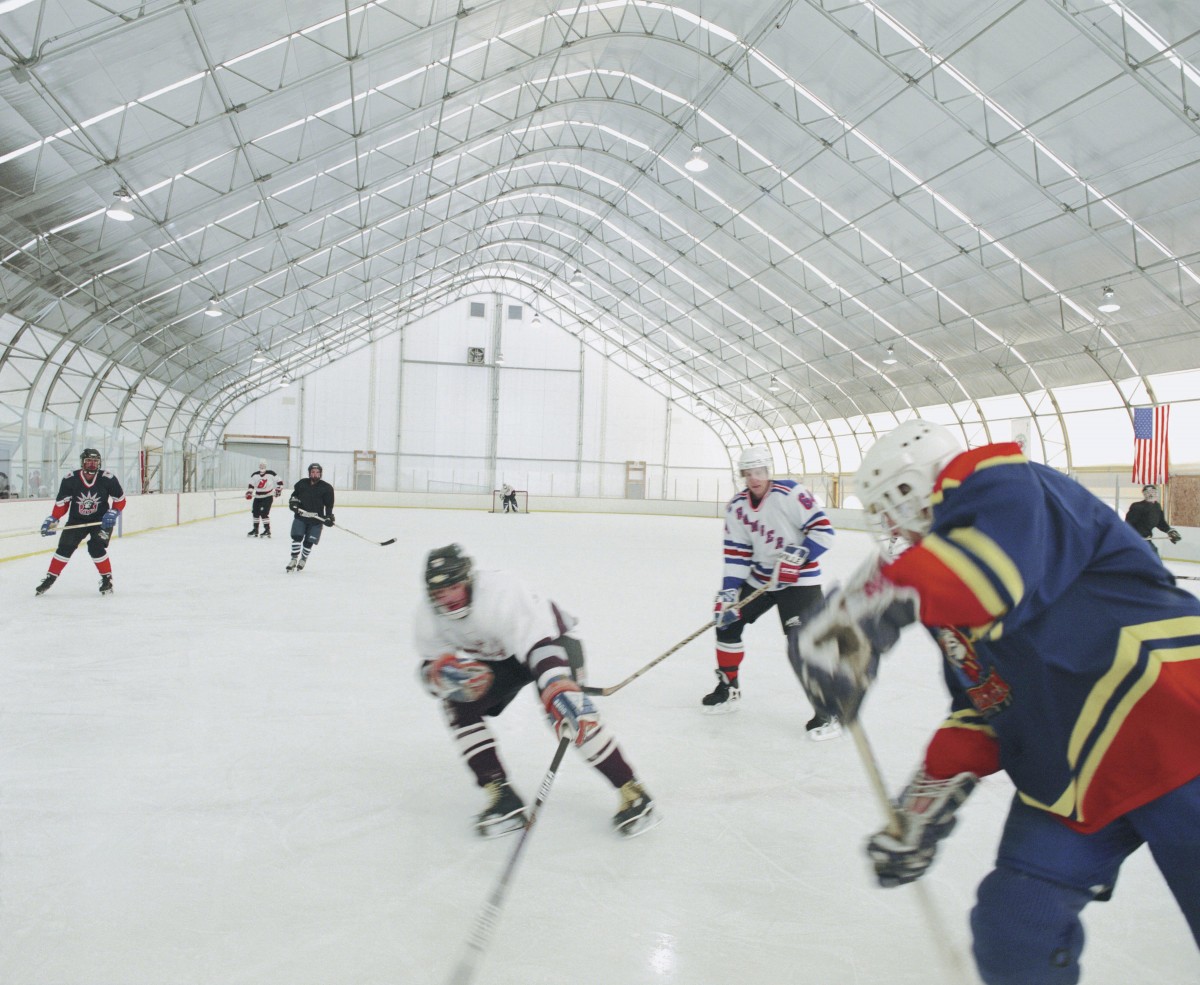By: Robert Lee
The magic of outdoor rinks in Canada is that, of course, that they are outdoors. However, small communities and remote villages often do not have enclosed arenas because of cost or difficulty constructing and maintaining these structures. Enter the fabric-covered structure. Think of IG Field in Winnipeg, or any of the retractable and fabric structures, domes, on stadiums across North America. While some use metal as a covering, many use polymers or fibreglass, so that the feel of outdoors remains.
Weather and Outdoor Rinks
To fully enclose an outdoor rink would be sacrilege for many purists. Yet, without some sort of shelter, whether limits community rinks in many ways. Seasons tend to be shorter because the sun melts the ice early and autumn sun allows the ground to hold heat longer. A canopy, on the other hand, provides the shade needed to mitigate the sun’s heat. Snow days are a welcome relief for workers who get a day off when the weather is uncooperative.
But open rinks become unusable as snowfall increases, and volunteer (or worse, paid) labour is called upon to clear the accumulations. Then there is rain. Climate change is hitting outdoor rinks hard, with rain occurring in every month of the year in much of Canada. Rain ruins rink ice. Sacrilege or not, the need to provide some shelter for rinks is obvious. A covered rink can double as a skating rink or curling rink, as a recreational site or a place to hold regular games. However, cost is the ultimate deciding criterion.
Today’s tension-fabric structures are adaptable and flexible. Their inherent design means workers can fit and configure them to any size, layout, or location, without a substantial change in cost. Poly fabric buildings are lightweight, easy to install, and, best of all, inexpensive. This opens up the opportunity for small communities to invest nominal amounts in a recreational facility that benefits everyone. We can construct these fabric buildings with fixed in-place walls or with removable walls, similar to party tent structures. This means overcoming purists’ resistance, since, in good weather, you can remove walls to allow for an open feel. The remaining canopy provides protection against the sun and snow and even offers limited protection against the wind — the evil partner of cold.
Year-Long Benefits
Interestingly, the winter shelter offered by fabric structures for outdoor rinks also extends the benefit into summer. You can now use the rink as an events venue, party venue, or even rented for private, revenue-generating functions. This means that fabric canopies can pay for themselves quickly. An open canopy also circumnavigates the need for adherence to building codes that apply to permanent structures. This, in turn, reduces construction costs and ongoing costs.
Maintenance of fabric buildings is minimal, meaning that operating expenses are minimized relative to wood or metal coverings. With fabric, light filters through, so there is little need for the daytime lighting that would be needed for wood or metal structures. At the same time, there is no bleeding of moisture in early spring days, such as experienced in metal buildings with bolt and nut extrusions in the roofline. This reduces ice maintenance.
Cost-Saving Rinks
Local communities that want to keep an outdoor rink, or that can not afford to enclose their inexpensive outdoor facility now can save money while installing a poly-fabric complete cover or canopy. Even individual families or small groups can afford to cover their own rink. With the lightweight nature of the structure and the ease of installation, even location is not fixed, since it is relatively easy to relocate moderate-sized units. In fact, workers can construct some on caster wheels or rollers, making them truly portable.
Ideally, communities eyeing their future may consider building a fabric structure with adaption or expansion options, or to which they can add insulated walls and other features or amenities. This provides further cost-benefit. Covering an outdoor rink is far from the sacrilege purists claim when considering the options available in tension fabric buildings.




